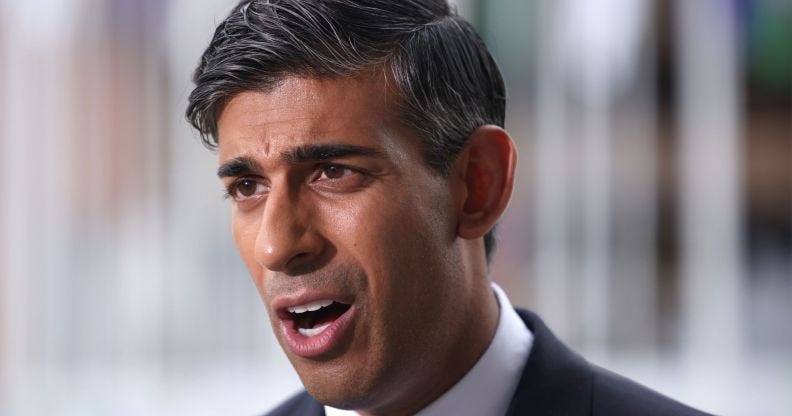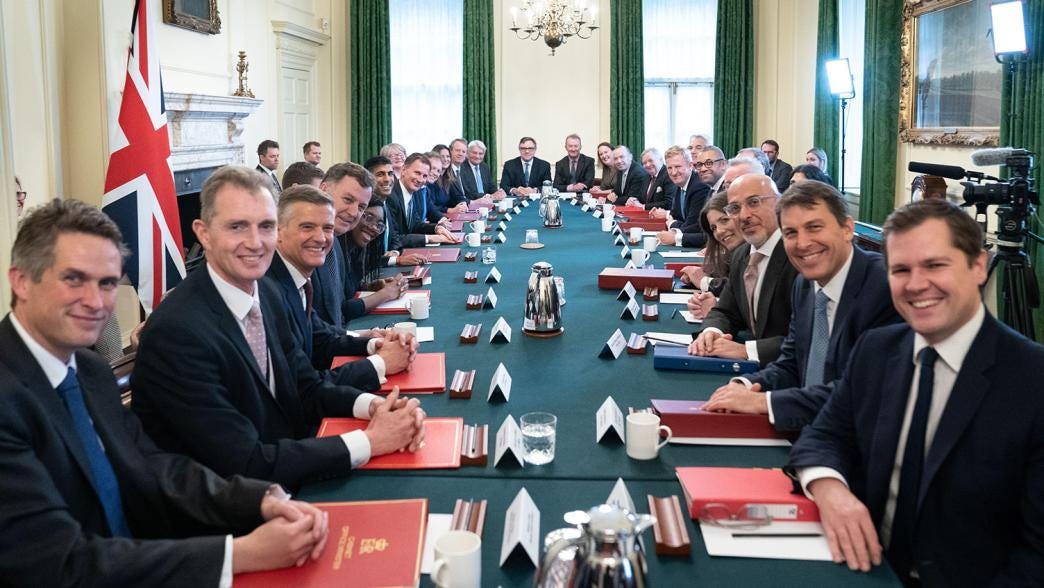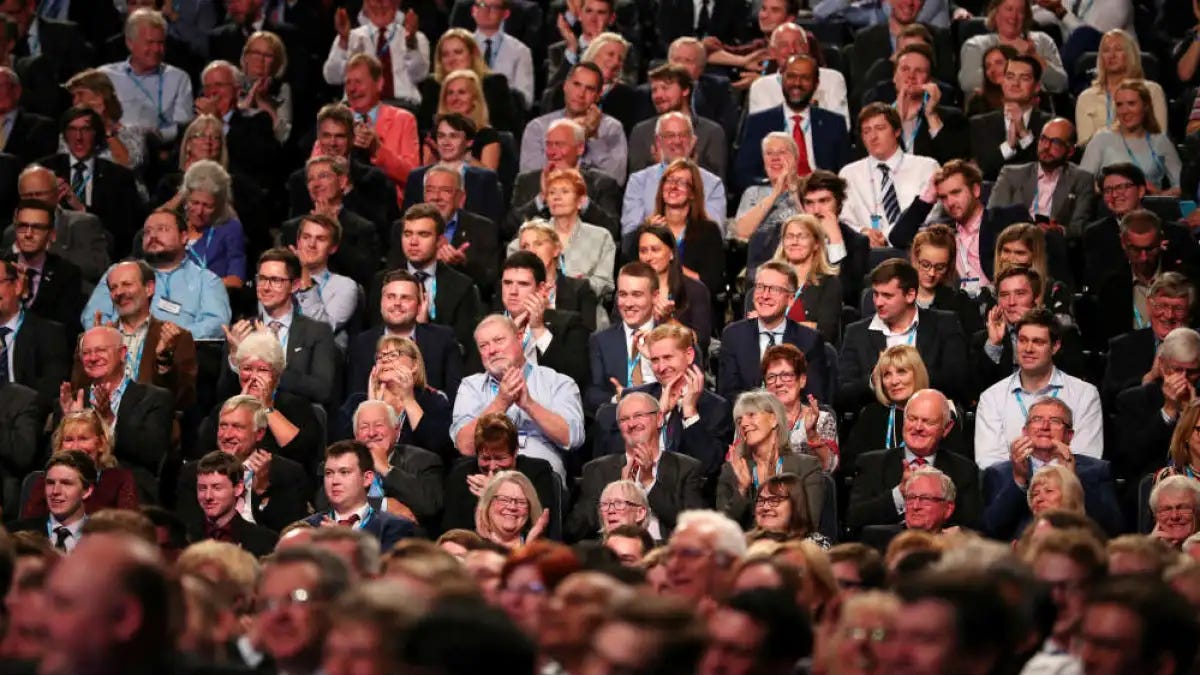To Stay Competitive, The Conservatives Need A Reset
October’s Conservative Conference is the ample opportunity for Sunak to unveil a new message that can connect with voters.
With the party flagging behind in the polls and having suffered two historic by-election defeats in July, the Conservatives look on track to lose the next election by a wide margin. Comparisons to 1997 are inevitable. Labour has reformed itself after ten years in the wilderness and looks to be in a dominant position while the Tories stumble from one crisis to another. To the pessimistic, chances of a conservative revival seem minimal.
The most sanguine of Conservative supporters point to a list of Sunak’s accomplishments as evidence he’s focused on delivering for the British people. Policy-wise, he produced a solution to the Northern Ireland trade deadlock, carved out a new image for Britain on the international stage, presided over slowing inflation, and passed a flagship bill aimed at curbing undocumented migration.
But these fairly limited successes aren’t convincing voters. According to recent polling conducted by Redfield, two-thirds of people still think Sunak has achieved “only a slight amount” or nothing at all in his premiership.
Many in the party hope that Sunak can inject a new sense of energy into a government entering its 14th year in office, and the upcoming Conservative conference in October seems to be the last opportunity for him to do so.
With a year to go until the next election, a revamp, in both appearance and message, is desperately needed. To most voters, Sunak and leading Conservative politicians are still largely seen as incompetent, with the consensus being that they have failed to adequately tackle the five policy objectives outlined in January 2023 – reducing inflation, curbing immigration, boosting economic growth, reducing NHS waiting times and overseeing a fall in national debt.
If Sunak wishes to restart his premiership, he’ll need to outline a new set of tangible – but achievable – policy objectives and concentrate on delivering them.
Cabinet reshuffle:
First, a cabinet reshuffle is in order.
A prime minister is only as capable as the team he surrounds himself with. Sunak’s cabinet is inundated with incompetent ministers, something he should address before pressing on with his policy agenda. Weaker performing ministers like Coffey, Frazer, Keegan and Harper should be sacked. They remain a liability for the government and their vacancies can be filled with loyal, committed ideologues.
Miriam Cates, a former teacher and passionate opponent to the Cultural Marxism currently infecting higher education, seems like a perfect candidate to replace Keegan as Education Secretary. Danny Kruger, another committed social conservative, would fit perfectly in the role of Justice Secretary, a position that would allow him the platform to combat a legal system dominated by bleeding-heart liberals who threaten social stability with their weak sentencing laws. During the last competitive leadership election, Kemi Beadanoch proved herself to be cultural maverick, willing to tackle and combat identity-politics.
With this new set of talent arranged behind him, Sunak can then press on with outlining a new vision for the country. Making an impact in the polls will involve reviving the economic-cultural alliance that swept Boris Johnson to victory in 2019, which allowed the Conservatives to make inroads into Labour’s traditional heartland, the so-called Red Wall. Economic interventionism coupled with social conservatism is thus the only way forward for the party to stay relevant.
Below, I have compiled a list of policy objectives the Conservatives can focus on in the following months. They have been selected based on their appeal to the Red-Wall voters the party desperately needs to hold onto to maintain its uneasy voter coalition.
Policy suggestions:
In an era of heightening divisions surrounding environmentalism, one step forward would be to contrast the parties’ climate policies, highlighting Labour’s overly ambitious, expensive and anti-motorist agenda. Pledging to scrap ULEZ and remove fuel duty would endear Sunak to the northern working-class most hard hit by the spiralling costs of net-zero policies while expanding offshore oil platforms and nuclear energy would commit him to securing energy independence for the country.
Another tenuous area with potential to exploit is the divisive social progressivism offered by Labour and the parties to its left. Starmer’s inability to define a woman still holds weight in many voter’s minds and can be highlighted to show the out-of-touch perspective of leading Labour figures. Other ways to do this include: banning gender transitioning, forbidding transgender individuals from competing in women’s sports, proposing a new statute guaranteeing academic freedom at universities, terminating identity-politics litmus tests in major government institutions, and abolishing the teaching of anti-Western doctrine from the national curriculum.
But doubling down on ‘anti-woke’ propaganda will not be sufficient enough to win over a swathe of voters who have been driven away by the party’s numerous scandals and inability to deliver a working economic model. Fixing, or at least alleviating, the economy’s many weaknesses is necessary.
If the party’s membership and backers remain unwilling to stomach tax increases, revenue must be generated elsewhere. A temporary moratorium on foreign aid would net the government around £15bn per year, funds that could go towards plugging the skill gap in NHS training or giving teachers and other vital public servants a much-needed pay rise. Leading Conservative officials seem to be gradually coming around to the idea of some form of drug legalisation. The legalisation of Cannabis, a drug already legalised in most Western European countries and one of the most consumed in the UK, seems like the next step. It would generate around £2bn in revenue annually through taxes and win the Conservatives support with a demographic they’ve been struggling with for years - young voters.
While not an exhaustive list, this set of policy proposals can act as a framework to guide the government over the next year. If the majority of these can be achieved, Sunak can expect to energise the conservative base and rally the undecided back to his cause, easily boosting the party back into the mid-30s and cutting Labour’s lead to single digits. The question is, will he be willing to embrace social revolution or will he be cowered back into adhering to stale, Thatcherite orthodoxy? The answer may very well determine next year’s election results.




